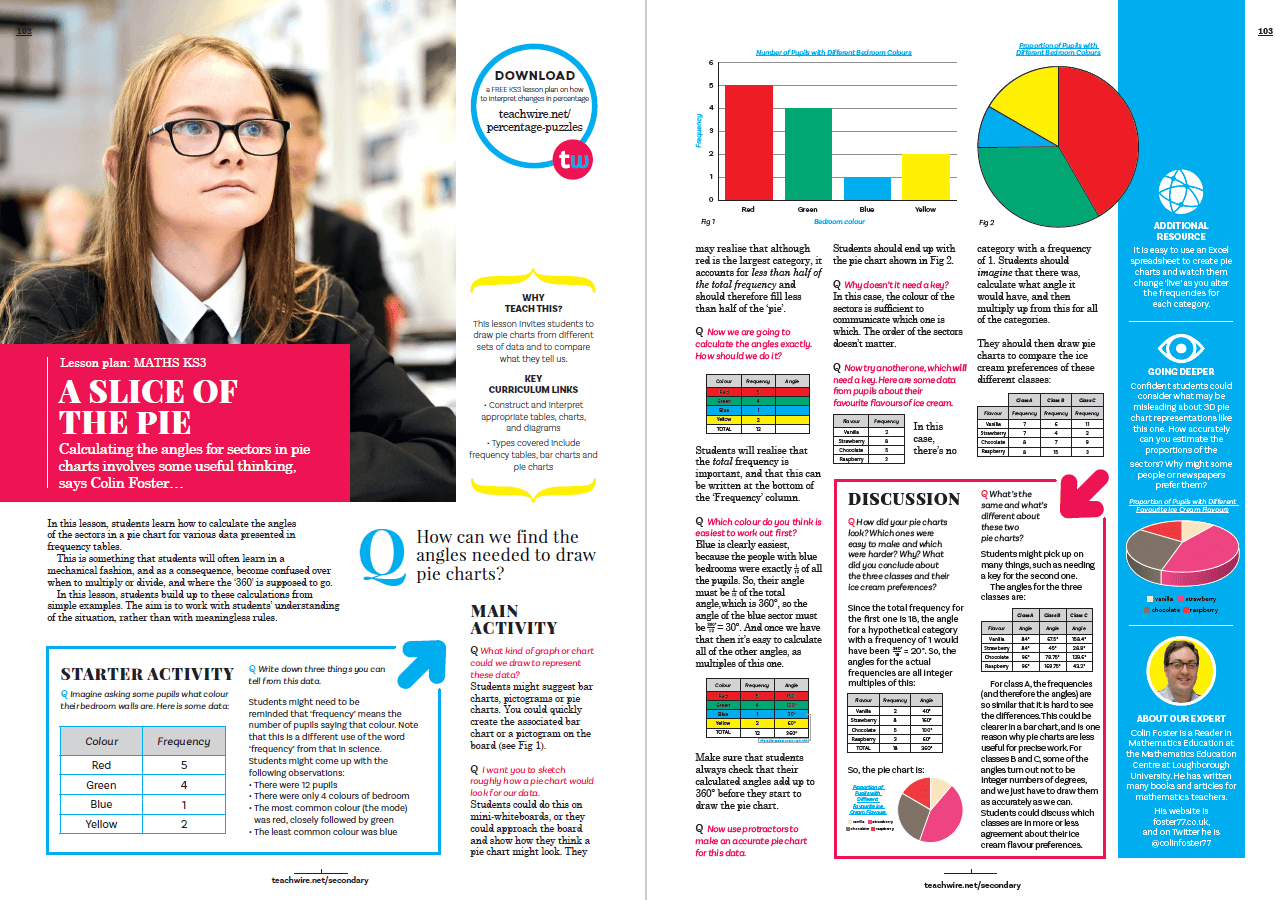Calculating the angles for sectors in pie charts involves some useful thinking, says Colin Foster…
In this lesson, students learn how to calculate the angles of the sectors in a pie chart for various data presented in frequency tables.
This is something that students will often learn in a mechanical fashion, and as a consequence, become confused over when to multiply or divide, and where the ‘360’ is supposed to go.
In this lesson, students build up to these calculations from simple examples. The aim is to work with students’ understanding of the situation, rather than with meaningless rules.
Why teach this?
This lesson invites students to draw pie charts from different sets of data and to compare what they tell us.
Key curriculum links
- Construct and interpret appropriate tables, charts, and diagrams
- Types covered include frequency tables, bar charts and pie charts














